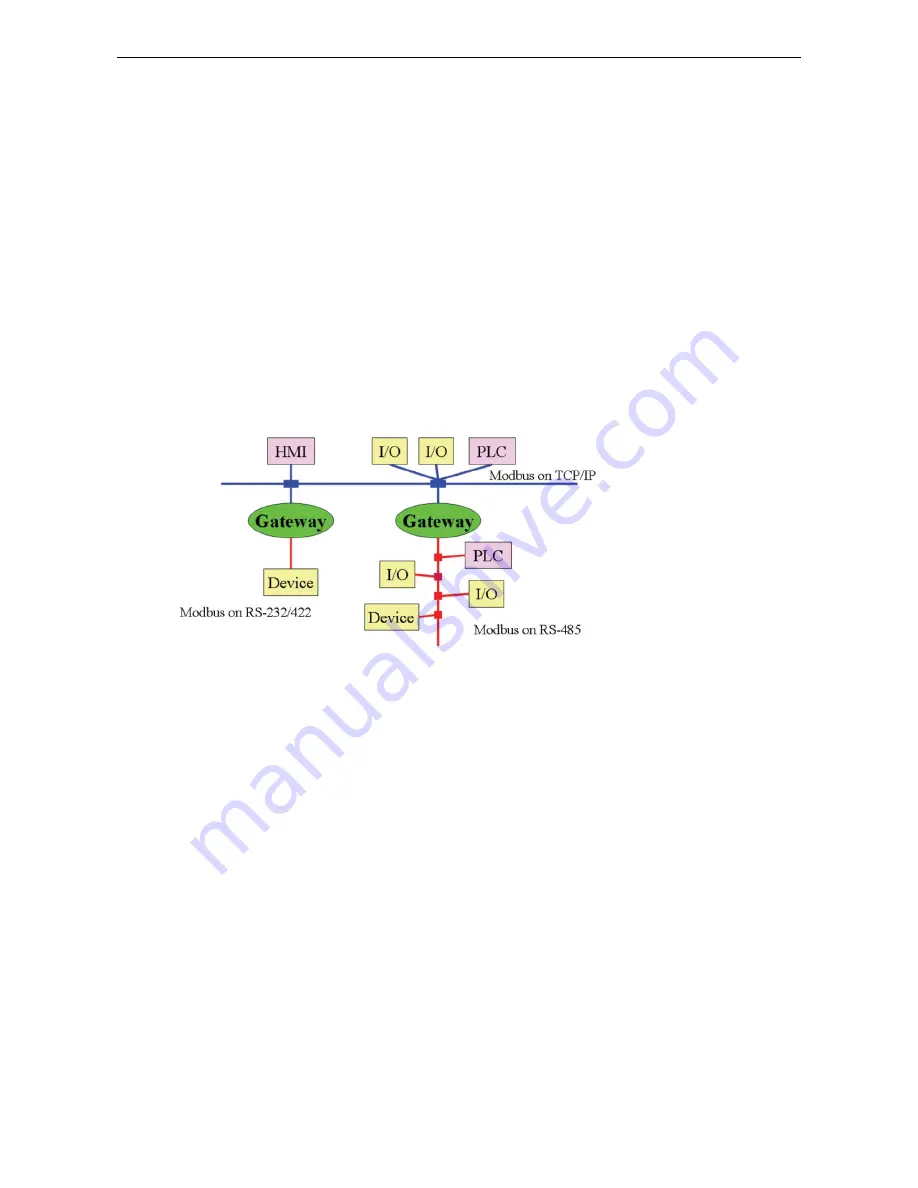
MGate MB3660 Modbus Gateway
Modbus Overview
A-3
Modbus Ethernet vs. Modbus Serial
Although Modbus is intended as an application-layer messaging protocol, the data format and communication
rules for Ethernet-based Modbus TCP are different from serial-based Modbus ASCII and RTU.
The major difference between the Ethernet and serial Modbus protocols is the behavior of the communication
model. Modbus ASCII and RTU allow only one request on the network at a time. Once a request is sent, no
other communication on the bus is allowed until the slave sends a response, or until the request times out.
However, Modbus TCP allows simultaneous requests on the network, from multiple masters to multiple slaves.
TCP masters cannot send more than one request at a time to a slave, but they can send requests to other slaves
before a response is received. The Modbus TCP standard recommends that slaves be able to queue up to 16
requests at a time. The MGate MB3660 will queue up to 32 requests from each TCP master, for up to 16 TCP
masters.
Integrate Modbus Serial and Ethernet with
Gateways
Ordinarily, Modbus TCP and Modbus ASCII/RTU are unable to communicate with each other. However, with a
Modbus gateway in between the Modbus serial network and the Modbus Ethernet network, TCP masters are
able to communicate with serial slaves and serial masters are able to communicate with TCP slaves.

































